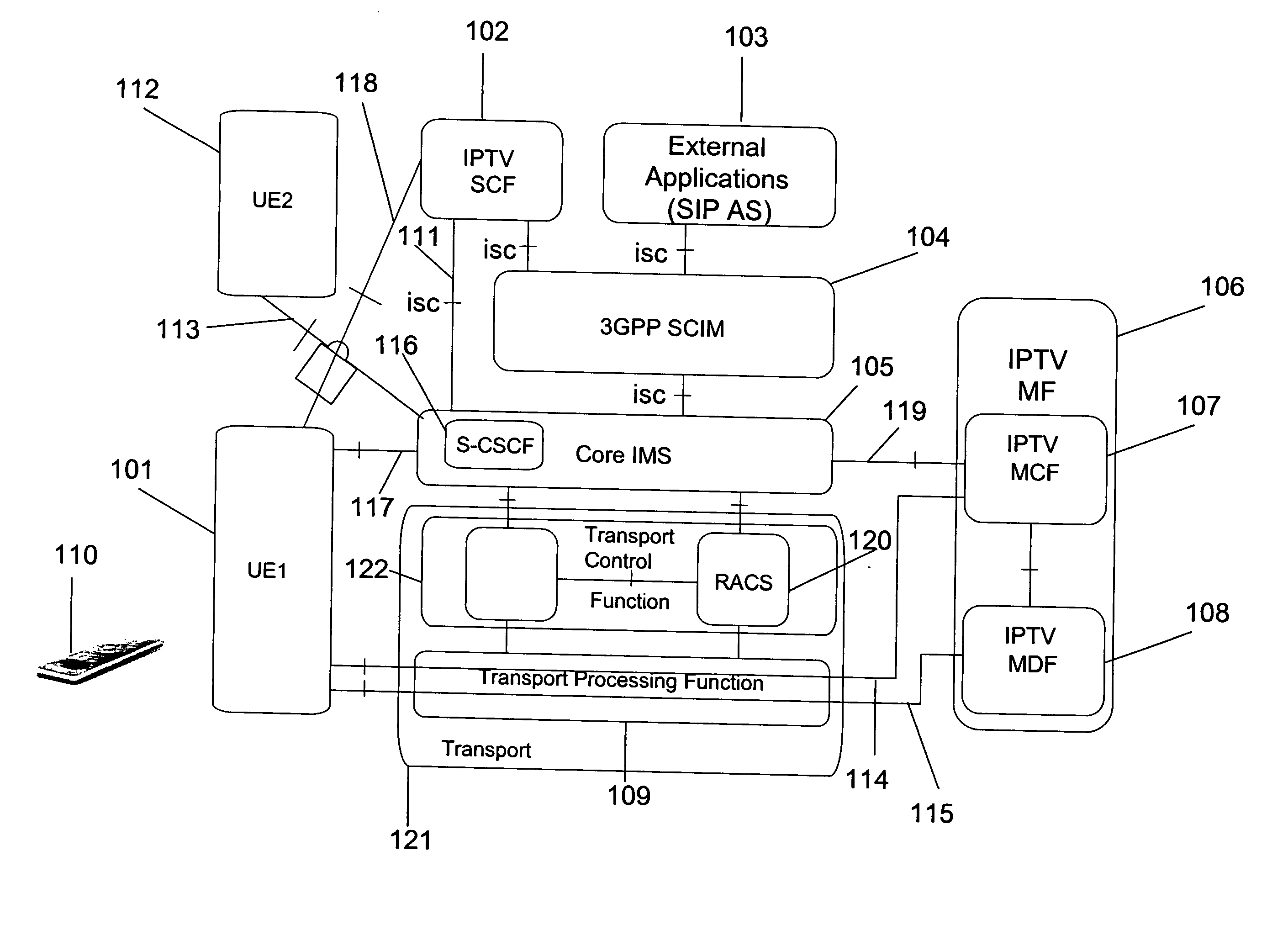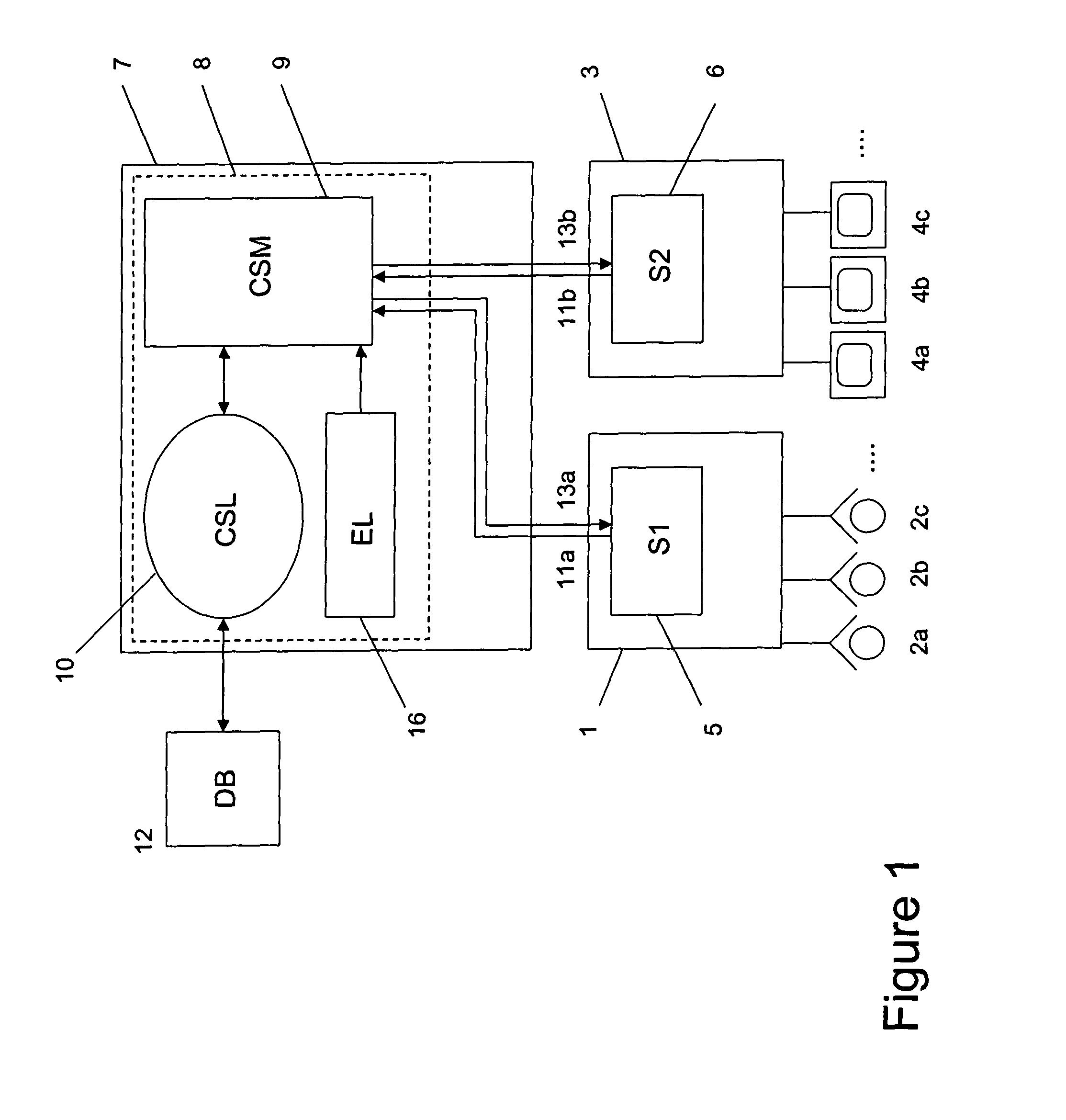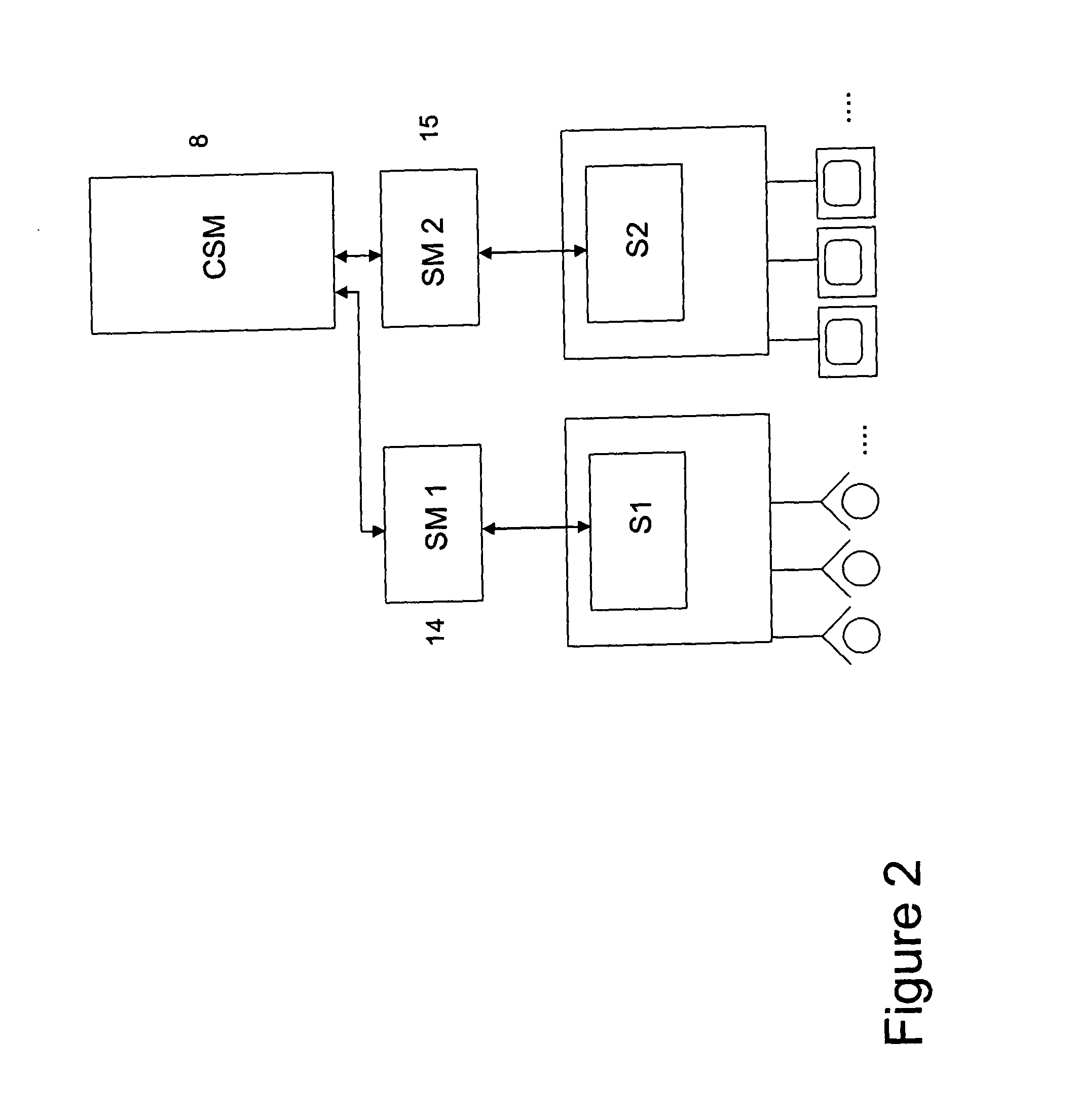System for Managing Service Interactions
- Summary
- Abstract
- Description
- Claims
- Application Information
AI Technical Summary
Benefits of technology
Problems solved by technology
Method used
Image
Examples
further example 1
[0137]In this example, the first service is a sunblind system. A user can manually raise or lower the blinds, to let the daylight in or keep it out. So, this first service has the states ‘raised’ and ‘lowered’. Now a second service is a weather measurement service, measuring for instance the outside temperature and measuring the amount of sunlight currently detected. A combined service here can combine these two services to automatically raise and lower the blinds, depending on the temperatures and amount of sunlight measured, but taking into account user specific actions as well. Normally, on a sunny day when the temperature rises above a certain point, the combined service will induce a state transition in the first service, by lowering the blinds. But when the user has already lowered the blinds, this is not necessary, although lowering them again will not have any effect. But suppose the day becomes more cloudy, and the temperature drops below a certain threshold. Normally, the ...
further example 2
[0138]Another example is in driving a car. A car can have multiple states, e.g. ‘driving’, ‘standing still’, ‘accelerating’, ‘decelerating’ and ‘breaking’. This ‘first service’ is usually directly under control of the user, in this case the driver. But sometimes this first service is also under control of a car service, e.g. using an automated speed limiter to prevent speeding. Cars nowadays also have advanced electronics and software, car management systems, etc. As a second service, this car management system monitors the condition of the car, which can have states like ‘in good condition’, ‘out-of-oil’, ‘overheated’, etc. One combined service could be to limit a car's speed based on the current condition of the car, e.g. to prevent overheating. Here also service interaction occurs: a driver is first being limited by the speed limiter, but can override this by indicating that he indeed wants to go faster (pressing the pedal to the metal). So, if the speed limiter is the cause of t...
PUM
 Login to View More
Login to View More Abstract
Description
Claims
Application Information
 Login to View More
Login to View More - R&D
- Intellectual Property
- Life Sciences
- Materials
- Tech Scout
- Unparalleled Data Quality
- Higher Quality Content
- 60% Fewer Hallucinations
Browse by: Latest US Patents, China's latest patents, Technical Efficacy Thesaurus, Application Domain, Technology Topic, Popular Technical Reports.
© 2025 PatSnap. All rights reserved.Legal|Privacy policy|Modern Slavery Act Transparency Statement|Sitemap|About US| Contact US: help@patsnap.com



